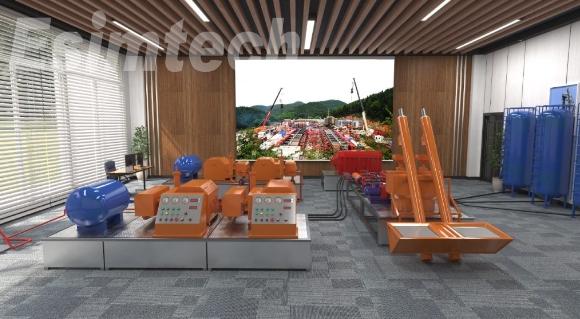The oil and gas industry constantly seeks ways to optimize production and unlock resources from unconventional reservoirs. Fracturing and acidizing are two well stimulation techniques that play a vital role in this endeavor. However, these processes can be complex and expensive, demanding precise planning and execution. This is where fracturing and acidizing simulators come into play, acting as powerful tools for maximizing production efficiency and minimizing environmental impact.
Understanding Fracturing and Acidizing:
Fracturing: Involves creating artificial cracks in rock formations to enhance the flow of hydrocarbons. A fracturing fluid carrying proppant is pumped down the wellbore, fracturing the rock and allowing the proppant to hold the fractures open, facilitating oil and gas flow.
Acidizing: Utilizes chemical solutions (acids) to dissolve formation components that restrict flow paths within the reservoir. This process improves permeability and unlocks trapped hydrocarbons.
The Challenge of Optimization:
While fracturing and acidizing are effective techniques, their success hinges on meticulous planning and execution. Traditionally, this involved a trial-and-error approach, leading to:
Inefficient resource allocation: Conducting unnecessary treatments due to a lack of accurate predictions.
Suboptimal production results: Failing to achieve the desired increase in well productivity.
Environmental concerns: Improper fracturing fluid management or over-acidizing a reservoir can lead to environmental risks.
Fracturing and Acidizing Simulators: A Game Changer
Fracturing and acidizing simulators leverage advanced computational models to simulate these well stimulation processes. By incorporating various reservoir data like rock properties, formation fluids, and wellbore geometry, these simulators can predict treatment outcomes with remarkable accuracy.
Benefits of Utilizing Simulators:
Enhanced Planning: Simulators allow engineers to test various treatment scenarios, optimizing fracturing fluid composition, pumping rates, and acidizing volumes for each well.
Improved Production Forecasts: By simulating the impact of stimulation treatments on well productivity, engineers can make more informed decisions about production targets and resource allocation.
Reduced Environmental Impact: Simulators help design treatments that minimize fracturing fluid usage and optimize acid selection, mitigating potential environmental risks.
Cost Savings: By optimizing treatment plans and minimizing unnecessary procedures, simulators can significantly reduce operational costs.
The Future of Well Stimulation:
The use of fracturing and acidizing simulators is rapidly becoming the norm in the oil and gas industry. As these tools become more sophisticated and incorporate advanced features like real-time data integration, we can expect even greater benefits. This includes:
Simulating complex reservoir behavior: Accounting for factors like multi-phase flow and geomechanics for a more holistic understanding of the stimulation process.
Real-time treatment optimization: Simulators coupled with downhole sensors could enable dynamic adjustments to treatment parameters during the operation itself, ensuring optimal results.
Conclusion:
Fracturing and acidizing simulators are revolutionizing well stimulation in the oil and gas industry. By enabling precise planning, optimized treatments, and reduced environmental impact, these tools are fostering a more sustainable and efficient approach to unlocking valuable hydrocarbon resources. As technology continues to evolve, simulators will undoubtedly play an increasingly crucial role in shaping the future of oil and gas production.

